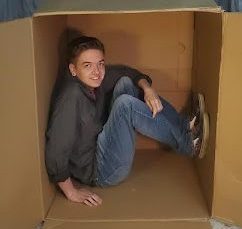From around 10 a.m. to noon on Monday, April 8, you may have noticed a slight dimming to the school and skies above you. This is due to the solar eclipse that traveled across North America. Although the path of totality was far from here in California, a partial eclipse was still extremely visible – where the Moon appeared to cover about half of the sun.
Junior Nathaniel Obando said, “It was pretty crazy to see. I remember the 2017 solar eclipse and how not often these eclipses happen so it was for sure a sight to see.”
This phenomenon happens when the Moon’s orbit perfectly lines up with the most direct point in the sun’s path, causing the Moon (which appears as a large black circle) to seem like it is covering the sun.
However, a solar eclipse is not to be taken without caution. It is an unfortunately common misconception that it is safe to view a solar eclipse without eye protection. Many wonder that if the sun is covered, it is less bright, so it should make it okay to gaze at. The truth is, the sunlight actually gets highly focused as it shines around the Moon and down onto Earth. Think of it like when you put your thumb in front of a garden hose to make the water more powerful. Additionally, because it gets dark during a solar eclipse your eyes will begin to dilate to allow more light in. Combine dilated pupils with concentrated sunlights and UV radiation; it’s not hyperbole to say that blindness is a consequence of looking at a solar eclipse without proper safety.
A couple methods can be used to behold the eclipse. One way to view the eclipse is by using a pinhole projector. This can be done with printer paper, cereal boxes, foil, and other basic home materials. However most agree that the best way to view it is by using the eclipse glasses. During solar eclipse seasons they are sold almost everywhere at cheap prices. To ensure that the glasses are of optimum quality and safety, you should see nothing except the color black when you put them on. If you can see objects visible through the lenses that are not the sun then find a new pair. One method which SHOULD NOT be used is by pointing a telescope at the sun and holding a piece of paper a few inches away from the eyepiece. It allows you to see a clear shadow of the eclipse onto the paper, yet it is very unsafe – for virtually everything in this process. To start, it will slowly fry the workings of your telescope. Without a solar filter, the concentrated sunlight will slough off the interior mirrors and glass in the telescope. Also, that same sunlight is powerful enough to ignite the paper right in your hand. Another danger that can follow is the light reflecting back to you from the opening of the telescope. Even just seconds of partial skin exposure between the opening and the sunlight can cause painful burns.
Junior student Nathan Levine used both a pinhole projector and eclipse glasses. “The glasses are the best way to see the eclipse for sure. If you want a more science-y kinda viewing then the pinhole projector is really cool too. But the glasses are crazy because you can just see the Moon right in front of the sun, it’s so awesome.”




